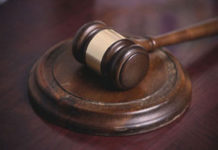With the string of magnitude-3.0 earthquakes that have hit San
Benito County in recent weeks, it serves as a reminder to local
citizens to get as prepared for a big one as possible. A basic home
kit should consist of water, flashlights with batteries,
non-perishable food items, pet food, extra eye glasses, any
necessary medication, canned food and an opener, close-toed walking
shoes, jeans and a sweatshirt.
HOLLISTER
With the string of magnitude-3.0 earthquakes that have hit San Benito County in recent weeks, it serves as a reminder to local citizens to get as prepared for a big one as possible.
While it’s up to residents to get their homes prepared, many of the buildings in downtown Hollister are well equipped to handle an earthquake, local architect and Planning Commissioner David Huboi told the Free Lance.
“From the outside, they look like they are in pretty good shape,” Huboi said. “And it’s surprising to say that.”
Huboi has experience working with some of the buildings downtown due to his work as both an architect and a planning commissioner. Some of the buildings he pointed to as structurally secure are the Public Safety Building on Fifth Street – which houses the San Benito County YMCA – and the building at 501 San Benito St.
Many of the older buildings in town are still intact due to what Huboi called “old-world building materials.” One such is the old Hazel Hawkins Hospital building on Monterey Street, which houses Huboi’s architecture business.
“These building are still around – like the old Hazel Hawkins Hospital – due to quality building materials,” Huboi said.
But when addressing concerns about historical buildings with the planning commission, Huboi said that there are two major concerns regarding preservation of older buildings downtown. One is that downtown sits on soft clay-like soil, which only accentuates the effects of an earthquake. The second is the proximity of the downtown area to the Calaveras fault.
Even with two factors going against the downtown area and the wear and tear of earthquakes over the years, Huboi is pleased with the condition of many buildings downtown.
“The buildings I’ve seen are in good condition,” Huboi said. “They were made out of old-world materials, better materials than you can find today.”
Earthquake preparedness, before, during and after.
While many of the buildings in Hollister are equipped to handle an earthquake, citizens and local families also carry responsibility for safety.
Earthquake preparedness can start well before one happens. The Monterey-San Benito Counties Red Cross’ Public Support Director Laura Kershner said that you and your family should have a disaster supply kit in place.
She said that a basic kit should consist of water, flashlights with batteries, non-perishable food items, pet food, extra eye glasses, any necessary medication, canned food and an opener, close-toed walking shoes, jeans and a sweatshirt. Be sure to have enough of these materials for each member of the family, she said.
“You should have enough supplies for 72 hours,” Kershner said. “Everyone should be able to take care of themselves for three days without any outside assistance.”
Other items you might want to consider having in the kit are copies of important documents. Kershner said she encourages people to have a copy of a certain license – for example a plumbing license – to show to someone so you could assist in dealing with emergency situations. She also recommends keeping copies of important documents such as marriage licenses or birth certificates in the kit as well.
Kershner recommends having an out-of-state contact as a primary point of contact because emergency operations usually flood the local phone lines.
Another recommendation is that you keep your vehicle filled with at least a half of a tank of gas at all times and have cash on hand for an earthquake because “ATMs and gas stations might not have working electricity,” Kershner said.
She also gave some other basic tips for earthquake preparedness. One is to have your water heater strapped in or fixed to the wall. Along with the water heater, you should also consider attaching large, heavy items to the wall such as a television or free-standing desk.
In the kitchen, Kershner said to place heavier items like pots and pans near the floor or lower cabinets and put lighter items higher in the cabinets.
During an earthquake, the American Red Cross recommends that you get under something sturdy like a table or desk to avoid being hit by things that might fall off the wall. While under a desk or table, duck, cover and hang on until the earthquake has stopped. Also, you should stay indoors in the event of an earthquake because most buildings in the area are built to withstand a quake. If you happen to be in your car during an earthquake, stay inside to avoid objects such as tree branches that might fall.
Afterwards, Kershner said: “You want to check on immediate loved ones, family, neighbors next door. Take care of you and your family first.”
Once you’ve done that, check to see if there has been a gas leak and only turn off your gas if you smell it. Kershner said that if you turn off your gas, you need to ask the gas company to help in turning it back on.
For more tips and information on earthquake preparedness, go to the American Red Cross Web site at www.redcross.org or the local chapter’s Web site at www.montereyarc.org.







